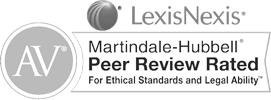What is a Chapter 13 Plan?
 In a Chapter 13 Bankruptcy case, the debtor is required to file a “Plan”. The plan is a written document that contains the debtor’s proposal for the reorganization of his financial affairs and the repayment of all or part of his debts.
In a Chapter 13 Bankruptcy case, the debtor is required to file a “Plan”. The plan is a written document that contains the debtor’s proposal for the reorganization of his financial affairs and the repayment of all or part of his debts.
The Plan discloses the amount that the debtor proposes to pay into the plan for the benefit of creditors. It often will identify specific creditors by name, or may classify creditors into generalized groups, without identifying them by name, but in either case, specific or general, the plan proposes whether, how much, and when creditors are to be paid, if anything.
History of the Ch. 13 Plan
The Bankruptcy Code does not require a debtor use any particular form for their Chapter 13 plans. And, over the years, bankruptcy attorneys have used many different formats. Historically, the contents of a Plan have varied widely. Attorneys often drafted their own plans. Some drafted generalized plans, while others drafted very complicated and specific plans. Such attorneys would often try to anticipate future events, problems, or circumstances and include in their plan detailed provisions dealing with these uncertainties for the debtor’s benefit.
Attorneys, who didn’t draft their own, would use forms that were provided by other attorneys, and often provided by the makers of the software that they used in preparing the debtor’s documents. Often the Bankruptcy Court would make a plan available for general use.
The Eastern District of Michigan has long offered a “Model Plan”. That plan was free to use and freely available on the Court’s website. That plan was very popular and gained broad acceptance. It was virtually the only plan used in Detroit for years, but was used with less frequency in cases assigned to the courts in Flint and Bay City. The District did not, however, require that that Model Plan be used, until now.
A New official Chapter 13 Plan adopted in Eastern Michigan
The Court recently announced that the Chapter 13 Trustees for the Eastern District of Michigan, after consultation with and after soliciting comments from the consumer bankruptcy bar in this district, had drafted and recommended to the Court, a new Chapter 13 model plan for use in the Bankruptcy Court for the Eastern District of Michigan.
After reviewing the new model plan, the Court announced that it had entered Administrative Order No. 12-05. That Order stated that on October 24, 2012, it adopted Guideline 14. Guideline 14 requires that all Chapter 13 plans filed in the Eastern District of Michigan be in the form and contain the content of the new model plan proposed by the Trustees. The new Model Plan 3.0 is available on the Court’s website, www.mieb.uscourts.gov and at www.13edm.com .
Structure of the new Chapter 13 Plan
Pay particular attention, because the model plan does contain a potential trap for the unwary. Be hopeful, because the plan adopts a provision that should reduce the need for plan modifications. Pay particular attention. The new Model Plan 3.0, like its predecessor, is divided into sections, with each plan section addressing different aspects of the plan.
Model Plan 3.0 also contains many of the same provisions that were included in the prior Model Plan, but Model Plan 3.0 has many interesting differences; first and foremost of these differences is that in all former plans, the Debtor would deliver, by mail, paper copies of the entire plan upon all creditors and interested parties.
Because the terms of Sections I through IV of the new model plan are financial in nature, they are usually unique to each debtor and to each case. Thus, the provisions in sections I through IV contain the most important information to creditors; i.e. how much and when are they to be paid. The new plan makes it very clear that the Debtor is only required to deliver paper copies of a Sections I. through IV of the new Model Plan 3.0 on creditors.
Section V of the new plan, entitled: ADDITIONAL TERMS, CONDITIONS AND PROVISIONS, contains more generalized plan provisions that have gained broad acceptance in the District and are intended to apply in all cases filed within the District. But, debtors are not required to mail a copy of Section V of the new model plan to creditors.
The new plan does not hide the fact that section V is not mailed. In fact, Section I. A of the new plan specifically states that Section V is incorporated into the plan by reference only. That section further advises creditors where these provisions are available. The provisions contained in Section V reside only on the Court’s websites, www.mieb.uscourts.gov , and at www.13edm.com . Section I states:
Section I. STANDARD MODEL PLAN; INCORPORATION OF ADDITIONAL TERMS, CONDITIONS AND PROVISIONS; ALTERATIONS NOTED. provides: A. THIS PLAN IS SUBJECT TO AND INCORPORATES BY REFERENCE THE ADDITIONAL TERMS, CONDITIONS AND PROVISIONS WHICH MAY BE FOUND AT WWW.13EDM.COM or WWW.MIEB.USCOURTS.GOV. INTERESTED PARTIES MAY ALSO OBTAIN A WRITTEN COPY OF THE ADDITIONAL TERMS, CONDITIONS AND PROVISIONS APPLICABLE TO CHAPTER 13 PLANS FROM DEBTOR’S COUNSEL UPON WRITTEN REQUEST.
For Creditors: Shortened Plan could mean bad news.
This is a very new development and a marked change in long established and familiar procedure. The purpose of these web-based provisions was to reduce the amount of paper used and postage required to mail the plan documents. It may well have that effect and I hope, sincerely that it does, but it may come at a cost to the unwary, unsophisticated or infrequent creditor.
Creditors who are used to getting the entire plan may not realize that the plan they now receive in the mail is only part of the story. It remains to be seen, whether debtors will continue to mail the full plan to creditors or whether creditors will “get the word” and realize that all key plan provisions were not contained in the plan that they receive in the mail. I personally think that most creditors, and in particular, those large, or national creditors who regularly participate in bankruptcy cases in Eastern Michigan, will become familiar with the web based plan provisions and will adapt quickly.
I’m concerned that there will likely be a large minority of attorneys and creditors, whose contact with bankruptcy courts, and the Eastern District of Michigan, in particular, is infrequent and that they may be caught by surprise and find themselves at a distinct disadvantage. Time will tell.
General Unsecured Creditors
Be Hopeful, another distinct change between Model Plan 3.0 and the former model plan, incorporates a change in the way that it deals with the claims of General Unsecured Creditors. Model Plan 3.0 is now “Base Plans”.
A base plan will provide a dividend to general unsecured claims, but rather than state that a specific dollar value or a specific percentage of claims, a Base Plan only guarantees unsecured creditors a dividend if all higher priority claims are paid. In essence, a Base Plan, will estimate the amount to be paid to unsecured creditors, but does not “set in stone” a fixed amount or percentage.
Claim Deadlines
Prior to 2013, and particularly in the courts located in Detroit, debtors were encouraged to propose plans that paid claims held by unsecured creditors a fixed percentage of the amount of allowed claims filed with the court. These “Percentage Plans” would guarantee a fixed percentage to be paid on allowed claims. This approach was sometimes problematic. A plan could be confirmed before the claim deadline passed.
Indeed, the claim deadline for governments is 90 days after the deadline for non-government claims. If a claim was filed in an amount greater than the amount scheduled by the debtor, or if a creditor was never listed in the schedules, but files a claim, these events would upset the plan, and it would no longer be able to meet a 10% dividend threshold The plan may still pay 8%, but that would still be less than the amount provided for in the confirmed plan, and would require a plan modification to restore feasibility
These events occur regularly, and they require the debtor to file an expensive amendment to the model plan to increase payments, or to reduce the percentage proposed to unsecured creditors. The new plan changes all that. Model Plan 3.0 changes the way that unsecured claims are paid and will reduce the frequency of plan modifications to restore a plan to feasibility when unscheduled claims are filed or when claims are filed in amounts that exceed the amount scheduled. Model Plan 3.0 “Base Plans” will remain feasible, as long as secured; priority and unsecured claims entitled to 100% payment are paid.
Conclusion
The new Model Plan 3.0 is a sea change in Chapter 13 practice in the Eastern District of Michigan. It contains other changes that I’ll leave to another installment. But, the two provisions that I have talked about are unique and represent sweeping changes, whereas the others, while still important, are more of an incremental change.
I encourage all creditors, attorneys, paralegals, and practitioners to be aware of the new plan, and in particular be aware that the plan that you or your client receives in the mail is not the entire plan. You must be aware of and obtain the web-based provisions and you must read them together with the plan delivered to your door, to be fully advised on the impact that it will have.
I’m also encouraged, that the new plan, with its embrace of the Base Plan, will help to ensure that a debtor’s plan will remain feasible, even longer, after confirmation. If you have any questions about Chapter 13 plans contact the Resnick Law firm.
Photo By Fried Dough



